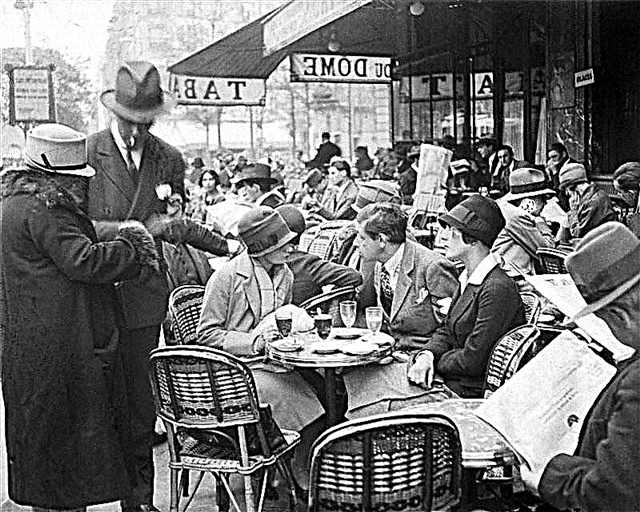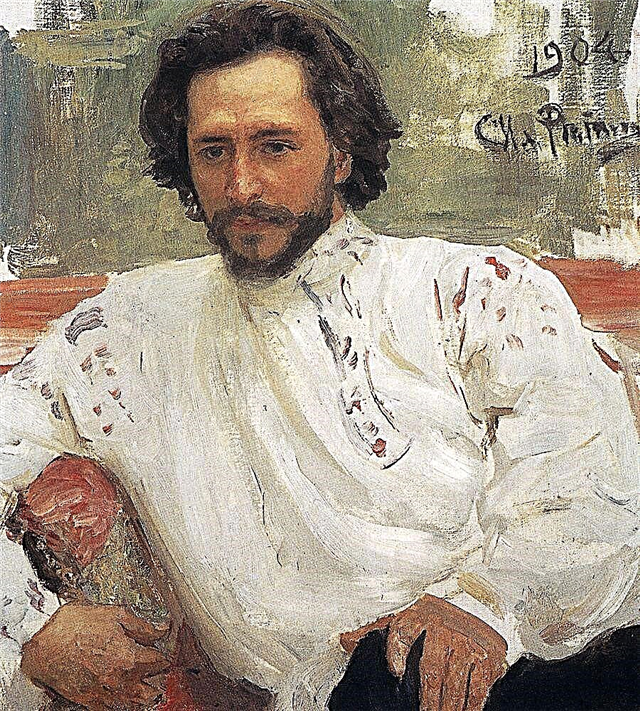Mary I Tudor (1516-1558) - the first crowned queen of England, the eldest daughter of Henry 8 and Catherine of Aragon. Also known by nicknames Mary the Bloody (Bloody Mary) and Maria the Catholic... In her honor, not a single monument was erected in her homeland.
The name of this queen is associated with cruel and bloody massacres. The day of her death (and at the same time the day of ascension to the throne of Elizabeth 1) was celebrated in the state as a national holiday.

There are many interesting facts in the biography of Mary Tudor, which we will talk about in this article.
So, before you is a short biography of Mary I Tudor.
Biography of Mary Tudor
Mary Tudor was born on February 18, 1516 in Greenwich. She was a long-awaited child with her parents, since all the previous children of the English king Henry 8 and his wife Catherine of Aragon died in the womb, or immediately after birth.
The girl was distinguished by her seriousness and responsibility, as a result of which she paid great attention to her studies. Thanks to these qualities, Maria mastered the Greek and Latin languages, and also danced well and played the harpsichord.
As a teenager, Tudor was fond of reading Christian books. During this time of her biography, she was trained in horse riding and falconry. Since Mary was the only child of her father, it was she who was supposed to pass the throne.
In 1519, the girl could lose this right, since the monarch's mistress, Elizabeth Blount, bore him a son, Henry. And although the boy was born out of wedlock, he still had a royal lineage, as a result of which he was assigned a retinue and awarded the corresponding titles.
Governing body
After some time, the king began to reason about who should transfer power. As a result, he decided to make Mary the Princess of Wales. It is worth noting that then Wales was not yet part of England, but was subordinate to her.
In 1525, Mary Tudor settled in her new domain, taking with her a large retinue. She was to oversee justice and the execution of ceremonial events. An interesting fact is that at that time she was only 9 years old.
After 2 years, major changes took place that dramatically influenced the biography of Tudor. After a long marriage, Henry annulled his relationship with Catherine, as a result of which Mary was automatically recognized as an illegitimate daughter, which threatened her with the loss of her right to the throne.

However, the offended spouse did not recognize the fictitiousness of the marriage. This led to the fact that the king began to threaten Catherine and forbid seeing her daughter. Maria's life deteriorated further when her father had new wives.
The first darling of Henry 8 was Anne Boleyn, who gave birth to his baby girl Elizabeth. But when the monarch learned about Anna's treason, he ordered her to be executed.
After that, he married the more compliant Jane Seymour. It was she who gave birth to her husband's first legitimate son, dying of postpartum complications.
The next wives of the English ruler were Anna Klevskaya, Catherine Howard and Catherine Parr. With a paternal brother, Edward, who took the throne at the age of 9, Mary was now the second contender for the throne.
The boy was not in good health, so his regents feared that if Mary Tudor married, she would use all her strength to overthrow Edward. The servants turned the young man against his sister and the motivation for this was the girl's fanatical commitment to Catholicism, while Edward was a Protestant.
By the way, it is for this reason that Tudor received the nickname - Mary the Catholic. In 1553, Edward was diagnosed with tuberculosis, from which he died. On the eve of his death, he signed a decree according to which Jane Gray of the Tudor family became his successor.
As a result, Maria and her paternal sister, Elizabeth, were deprived of the right to the crown. But when 16-year-old Jane became head of state, she had no support from her subjects.
This led to the fact that in just 9 days she was removed from the throne, and her place was taken by Mary Tudor. The newly elected queen had to rule a strange one badly damaged at the hands of her predecessors, who plundered the treasury and destroyed more than half of the temples.
Maria's biographers characterize her as not a cruel person. It was the circumstances that required tough decisions that prompted her to become such. During her first 6 months in power, she executed Jane Gray and some of her relatives.

At the same time, the queen initially wanted to pardon all the condemned, but after the Wyatt rebellion in 1554, she could not do this. In the following years of her biography, Maria Tudor actively rebuilt churches and monasteries, doing everything possible for the revival and development of Catholicism.
At the same time, at her order, many Protestants were executed. Approximately 300 people were burned at the stake. An interesting fact is that even those who, facing the fire, agreed to convert to Catholicism could not hope for mercy.
For this and other reasons, the queen began to be called - Bloody Mary or Bloody Mary.
Personal life
Parents chose a groom for Maria when she was barely 2 years old. Heinrich agreed on the engagement of his daughter with the son of Francis 1, but later the engagement was terminated.
4 years later, the father again negotiates the marriage of the girl with the Holy Roman Emperor Charles 5 of Habsburg, who was 16 years older than Mary. But when, in 1527, the English king revised his attitude towards Rome, his sympathy for Charles vanished.
Henry set out to marry his daughter to one of the high-ranking royal persons of France, which could be Francis 1 or his son.
However, when the father decided to leave Maria's mother, everything changed. As a result, the girl remained unmarried until the death of the king. By the way, at that time she was already 31 years old.
In 1554, Tudor married the monarch of Spain Philip 2. It is interesting that she was 12 years older than her chosen one. Children in this union were never born. The people did not like Philip for his excessive pride and vanity.

The retinue who came with him behaved in an unworthy manner. This led to bloody clashes between the British and the Spaniards on the streets. Philip did not hide that he had no feelings for Mary.
The Spaniard was fascinated by his wife's sister, Elizabeth Tudor. He hoped that over time the throne would pass to her, as a result of which he maintained friendly relations with the girl.
Death
In 1557 Europe was swallowed up by a viral fever that killed a large number of people. In the summer of the following year, Maria also fell ill with a fever after realizing that she was unlikely to be able to survive.
The queen was worried about the future of the state, so she wasted no time drawing up a document that deprived Philip of his rights to England. She made her sister Elizabeth her successor, despite the fact that during their lifetime they often clashed.
Mary Tudor died on November 17, 1558 at the age of 42. The cause of her death was a fever, from which the woman was never able to recover.
Photo by Mary Tudor
















